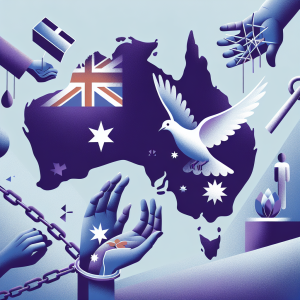Unmasking the Hidden Epidemic: Spotlight on Domestic Violence Awareness Month
Introduction
Domestic violence is a widespread issue that affects individuals, families, and communities globally. It is an epidemic that often remains hidden behind closed doors, leaving victims afraid and silenced. However, October marks the Domestic Violence Awareness Month, when we shed light on this hidden epidemic, raise awareness, and work toward ending domestic violence. In this article, we will delve into the significance of Domestic Violence Awareness Month, explore the impact of domestic violence, provide resources for survivors and their loved ones, and answer frequently asked questions (FAQs) regarding domestic violence.
Understanding Domestic Violence
Domestic violence refers to the pattern of abusive behavior in an intimate relationship, where one partner seeks to gain power and control over the other. It manifests in physical, emotional, psychological, and even financial forms. Domestic violence can affect anyone regardless of gender, age, race, or socioeconomic status.
The Hidden Impact of Domestic Violence
The impact of domestic violence extends far beyond physical harm. Victims may suffer from emotional trauma, low self-esteem, anxiety, depression, and post-traumatic stress disorder (PTSD). Children who witness domestic violence are also greatly affected, and the cycle of abuse can perpetuate across generations. Furthermore, domestic violence has economic implications, as survivors may struggle to maintain employment or financial stability due to their abusive situations.
Spotlight on Domestic Violence Awareness Month
October serves as an opportunity to put domestic violence in the spotlight, with various individuals and organizations collaborating to raise awareness, educate the public, and support survivors. Domestic Violence Awareness Month allows us to acknowledge the experiences of survivors, remember those who lost their lives to domestic violence, and demonstrate solidarity with those impacted.
Raising Awareness: What Can You Do?
There are several ways to actively participate in Domestic Violence Awareness Month. Educate yourself and your community about the signs of domestic violence, how to intervene safely, and resources available for survivors. Wear purple, the official color of Domestic Violence Awareness Month, to show your support. Share information on social media platforms to reach a wider audience, and consider organizing or participating in local events or fundraisers that aim to raise awareness and funds to support domestic violence survivors.
Resources for Survivors and their Loved Ones
Survivors of domestic violence and their loved ones often struggle to find the necessary resources and support. However, several organizations provide assistance, counseling, and guidance. Below are some key resources:
1. The National Domestic Violence Hotline: A 24/7 helpline providing support, information, and local resources for those affected by domestic violence. Call 1-800-799-SAFE (7233) or visit www.thehotline.org.
2. Local Domestic Violence Shelters: Ensure the availability of safe shelters for survivors and their children, providing temporary housing, counseling, legal aid, and other vital services. Research local shelters in your area for further information.
3. Counseling Services: Professionals such as therapists, counselors, and psychologists specialize in helping survivors cope with the trauma of domestic violence. Seek out licensed professionals who can provide the support needed.
4. Legal Assistance: If legal action is necessary, organizations like Legal Aid can offer guidance and representation to survivors as they navigate the legal system.
FAQs on Domestic Violence
1. What are the warning signs of domestic violence?
Warning signs include physical injuries, frequent absences from work or social events, excessive control by a partner, fearfulness or anxiety in the presence of a partner, isolation, and erratic behavior.
2. How can I help a friend or family member experiencing domestic violence?
Offer support and empathy, encourage them to talk about their feelings and experiences, share resources and information, and assure them that help is available.
3. Is it possible for someone to change their abusive behavior?
While change is possible, it requires genuine commitment, professional intervention, and long-term support. However, it is essential to prioritize the safety and well-being of survivors first.
Conclusion
Domestic Violence Awareness Month sheds light on the hidden epidemic that affects countless individuals and families worldwide. By increasing awareness, providing resources for survivors, and supporting national and local initiatives, we can break the cycle of domestic violence and create a society that is safe and just for all. Stand up, speak out, and take action against domestic violence. Together, we can make a difference.





















